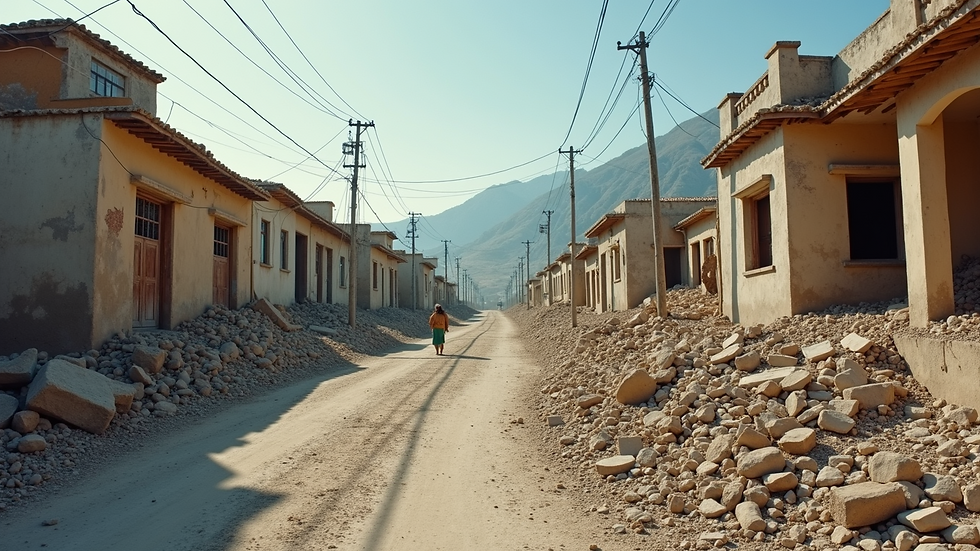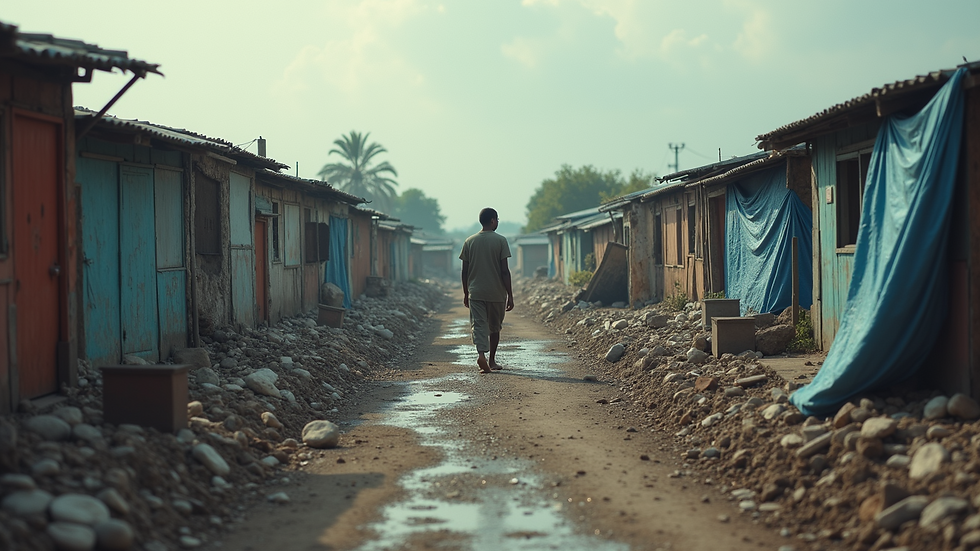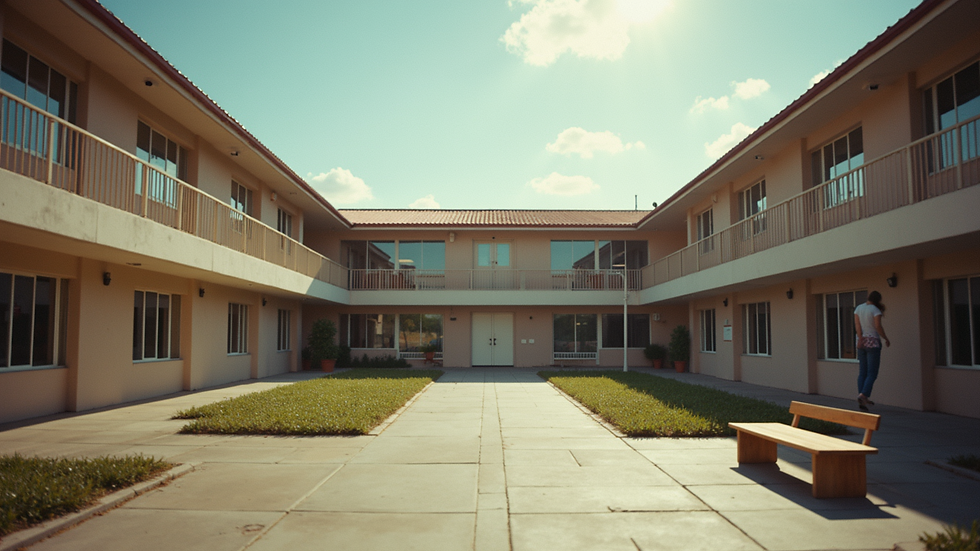Philippine Disasters: Earthquake Warning and Survival Preparation
- Apr 22
- 4 min read
The Philippines is a beautiful archipelago; however, it faces numerous challenges, particularly concerning natural disasters. Among these, earthquakes pose one of the most significant threats. With the country sitting on the Pacific Ring of Fire, seismic activity is frequent. This blog post delves into earthquake preparedness, especially focusing on how the poorest communities can navigate the challenges. We will discuss survival strategies, the essential role of early warning systems, and the current state of disaster relief efforts aimed at vulnerable populations.

Understanding the Earthquake Risk in the Philippines
Earthquakes are a regular occurrence in the Philippines. The Philippine Institute of Volcanology and Seismology (PHIVOLCS) monitors seismic activity and has recorded several significant earthquakes over the years. On average, the country experiences thousands of quakes each year, some strong enough to cause devastation.
For instance, the 1990 Luzon earthquake left more than 1,600 dead and caused widespread destruction. This seismic threat necessitates proactive measures to protect communities, particularly those that are underserved and lack the resources to prepare adequately.
The Vulnerability of Poor Communities
While earthquakes affect everyone, low-income communities are often at greater risk due to inadequate infrastructure. Poorly built homes cannot withstand seismic shocks, leading to higher casualty rates and financial losses.
According to a study by the International Disaster Emergency Committee, 80% of earthquake-related deaths occur in low-income areas. The lack of access to information, resources, and immediate relief services exacerbates their vulnerability. This disparity highlights the need for targeted interventions to enhance disaster preparedness among the poorest Filipinos.

Preparing for an Earthquake: Fundamental Steps
Preparation is key to mitigating the impacts of earthquakes. Here are some fundamental steps that communities can take to prepare:
1. Develop an Emergency Plan
Every household should have an emergency plan, detailing how to respond during an earthquake. Families should discuss where to meet after shaking and how to reach out to one another if separated. Children should be educated about these plans so they understand what to do.
2. Secure Your Home
Those who can should secure heavy furniture and appliances that may fall during shaking. Utilizing brackets and anchors can prevent injuries and damages. Conducting a home safety check can significantly reduce risks.
3. Create an Emergency Kit
Families should prepare an emergency kit with essential supplies such as water, non-perishable food, first aid supplies, and flashlights. A good guideline is to have enough supplies to last at least three days.
4. Stay Informed
Communities must be aware of the early warning systems. Local government units are equipped with tools to alert residents of impending earthquakes. Familiarity with these systems can save lives.
5. Engage in Community Drills
Participating in community earthquake drills encourages collective preparedness. Local authorities can facilitate these drills, ensuring that residents know evacuation routes and safe places to gather after an earthquake.
Early Warning Systems: A Lifeline
Early warning systems can provide crucial seconds to minutes of lead time before an earthquake strikes. These systems rely on detecting seismic waves. Within seconds, alerts can be issued, allowing people to drop, cover, and hold on.
For communities in the Philippines, the government has established initiatives to build and enhance early warning systems. However, gaps remain. Many rural areas lack adequate technology or training regarding how to utilize these systems.
Role of Technology in Disaster Preparedness
Advancements in technology can significantly improve earthquake preparedness. Mobile apps, social media, and community radio broadcasts can disseminate vital information.
Furthermore, people can take proactive measures by following relevant social media accounts that track seismic activity. The more informed people are, the better prepared they will be.

The State of Disaster Relief Efforts
Disaster relief efforts in the Philippines have evolved over the years. Government agencies work alongside non-profit organizations to provide immediate assistance after earthquakes. Food, water, and temporary shelter are typically prioritized.
However, challenges remain. For instance, logistical issues can delay the delivery of relief supplies. In some regions, infrastructure collapses hinder access to affected areas, particularly in rural settings where resources are already scarce.
Mobilizing Community Support
Communities often mobilize their support systems in response to natural disasters. Local leaders and volunteers play crucial roles in coordinating relief efforts. Grassroots organizations can provide educational workshops on disaster preparedness and actively engage residents in recovery programs.
Importance of International Aid
International humanitarian organizations often assist the Philippines following major seismic events. These organizations provide much-needed resources and expertise. However, the level of aid can vary based on the global political climate and the urgency of the situation.
Building Resilience in Vulnerable Communities
To protect the poorest communities, a comprehensive approach must be adopted. This includes not just immediate relief but also long-term strategies for building resilience.
Investing in Infrastructure
Investments in resilient infrastructure can save lives in the event of an earthquake. This includes constructing homes designed to withstand seismic activity and developing better urban planning measures.
Empowering Communities Through Education
Education is a powerful tool. By empowering communities with knowledge and resources regarding earthquake preparedness, people can make informed decisions about their safety.
Creating Partnerships
Collaboration between the government, NGOs, and local communities is essential. These partnerships can lead to innovative solutions to address the unique challenges faced by vulnerable populations, ultimately enhancing overall resilience.
Taking Action Towards a Safer Future
As the frequency of earthquakes in the Philippines continues to persist, it becomes increasingly vital for both individuals and communities to prepare adequately. Through education, emergency planning, community engagement, and effective partnerships, vulnerable populations can better protect themselves against the unpredictable nature of these disasters.
Ultimately, fostering a culture of preparedness can significantly reduce the risks associated with earthquakes. Implementing the strategies outlined in this post will enable communities to thrive even in the face of adversity. As citizens become more proactive, the impacts of catastrophic events can be minimized, yielding a brighter and more secure future for all Filipinos.
Let us remember that preparation is not just a personal responsibility but a collective commitment to ensuring safety for everyone, particularly the most vulnerable among us. By working together, we can create resilient communities, ready to face the challenges of natural disasters with courage and preparedness.




Comments